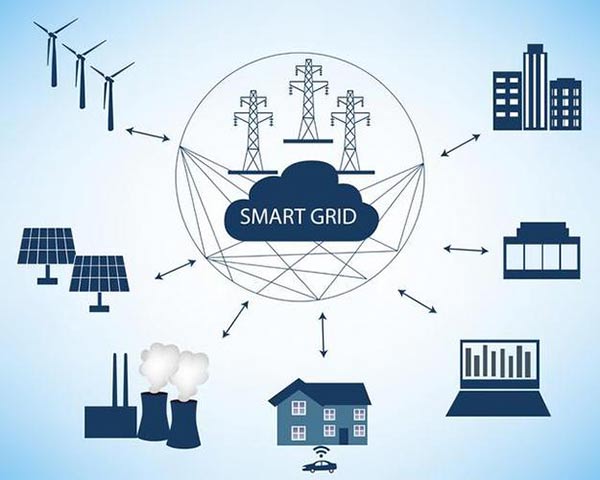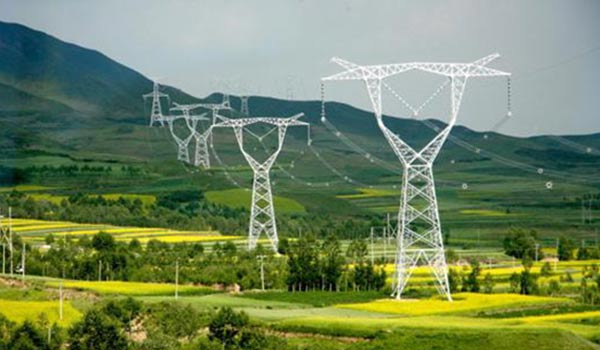Global Smart Grid Project Market To Grow Significantly
International market research firm Markets and Markets has released a report stating that the global smart grid market is expected to grow from $43.1 billion in 2021 to $103.4 billion in 2026, at a compound annual growth rate of 19.1% during the period.
COVID-19 slows the growth of the smart grid market as countries are forced to implement embargoes starting in the first half of 2020. Strict guidelines were issued by governments and local authorities and all non-essential operations were halted.
This has adversely affected the smart grid market due to the suspension of end-user activities.
In addition, there were production and supply chain delays in the second quarter as the smart grid systems are still not operating at full capacity, which posed a challenge to the smart grid market.

However, as vaccines become widespread starting in 2021, governments around the world are beginning to gradually liberalize embargoes and respond more effectively.
Coupled with continued high investments in renewable energy, governments around the world have implemented several supportive policies and mandates that focus on implementing smart grids and spreading awareness about energy efficiency.
These regulations have driven the adoption of smart grid technologies in industrial, commercial, and residential applications.
On the other hand, the initial phase of smart grid deployment is capital intensive as it is. This may inhibit the growth of the global smart grid market.
The role of local and national governments in energy infrastructure transformation is crucial.
Smart grid technologies require huge initial investments to build transmission networks that allow two-way communication between utilities and their customers.
In addition, effective deployment of smart grids requires strong coordination across traditional organizational boundaries, a high degree of flexibility for significant process changes, and rigorous governance.
The high investment required for successful smart grid deployment can add to the economic burden on governments. Likewise, the high operation and maintenance costs of deploying smart grid technologies are another big issue for utility providers.
Developing countries with weak infrastructure, such as China, Brazil, and India, also need huge financial support to build and upgrade infrastructure.
While billions of dollars are being invested in smart city projects, the challenge of ensuring a significant and profitable return on investment (ROI) remains.
Public and private organizations will play an important role by providing low-interest loans or providing grants and funding for smart grid projects.
North America, which includes countries/regions such as the U.S., Canada, and Mexico, is making significant contributions to the growth of the regional market.
The region is estimated to account for the largest share of the global smart grid market, and similar trends are expected to continue through 2023.
One of the main reasons for the large market size is the early adoption of smart grid projects. The strong financial position of the U.S. and Canada has enabled them to make significant investments in smart infrastructure platforms in the smart grid market.
The major driver for the U.S. market is expected to be that it is the most mature market in terms of smart grid deployment, advanced IT infrastructure, presence of multiple players, and availability of technical expertise in the country. Smart grid technology in the U.S. is undergoing a major transformation with the application of digital technology to distributed energy sources. All these factors are expected to drive the growth of the North American smart grid market.

What Is a Smart Grid? What Are Its Characteristics?
Meaning
The smart grid is the intelligence of the grid, also known as “Grid 2.0”.
It is based on an integrated, high-speed bi-directional communication network that uses advanced sensing and measurement technologies, advanced equipment technologies, advanced control methods, and advanced decision support system technologies to achieve the goal of a reliable, secure, economical, efficient, environmentally friendly, and safe grid.
Its main features include self-healing, stimulating and protecting customers, resisting attacks, providing power quality that meets customers’ needs, allowing access to various forms of generation, initiating power markets, and optimal and efficient operation of assets.
Features
Compared with the existing power grid, the smart grid embodies the remarkable characteristics of highly integrated power flow, information flow, and business flow.
Its advancement and advantages are mainly manifested in:
1. A strong grid foundation system and technical support system that can resist all kinds of external interference and attacks, adapt to large-scale clean energy and renewable energy access, and consolidate and enhance the strength of the grid.
2. The organic integration of information technology, sensor technology, and automatic control technology with the grid infrastructure allows for the acquisition of panoramic information about the grid and the timely detection and anticipation of possible faults. When a fault occurs, the grid can quickly isolate the fault and achieve self-recovery, thus avoiding the occurrence of large-scale power outages.
3. Flexible AC/DC transmission, network-plant coordination, intelligent dispatching, power storage, distribution automation, and other technologies are widely used to make the grid operation and control more flexible and economical and can adapt to the access of numerous distributed power sources, microgrids and electric vehicle charging and discharging facilities.
4. The integrated use of communication, information, and modern management technologies will greatly improve the efficiency of power equipment use, reduce power loss, and make the grid operation more economical and efficient.
5. Realize a high degree of integration, sharing, and utilization of real-time and non-real-time information, and display a comprehensive, complete, and detailed grid operation status map for operation management, while providing corresponding auxiliary decision support, control implementation plan, and response plan.
6. To establish a two-way interactive service mode, users can understand the power supply capacity, power quality, tariff status, and outage information in real-time, to reasonably arrange the use of electrical appliances. Power companies can obtain detailed power consumption information of users and provide them with more value-added services.
Significance
The construction of a strong smart grid will promote the development of smart cities and improve people’s quality of life.
1. Make life more convenient.
The home intelligent power system can realize real-time control and remote control of air conditioners, water heaters, and other intelligent home appliances; it can also provide access services for telecommunication networks, Internet, radio, and TV networks; it can also realize automatic meter reading and automatic bill transfer through intelligent power meters.
2. Make life more low-carbon.
Smart grid can access small home wind power and rooftop photovoltaic power generation devices, and promote the large-scale application of electric vehicles, thus increasing the proportion of clean energy consumption and reducing urban pollution.
3. Make life more economical.
A smart grid can promote the role of electricity users to change so that they have both the properties of electricity consumption and electricity sales; it can build a comprehensive service platform for users to help them reasonably choose the way to use electricity, save energy and effectively reduce energy costs.
—ZMS Cable Group
